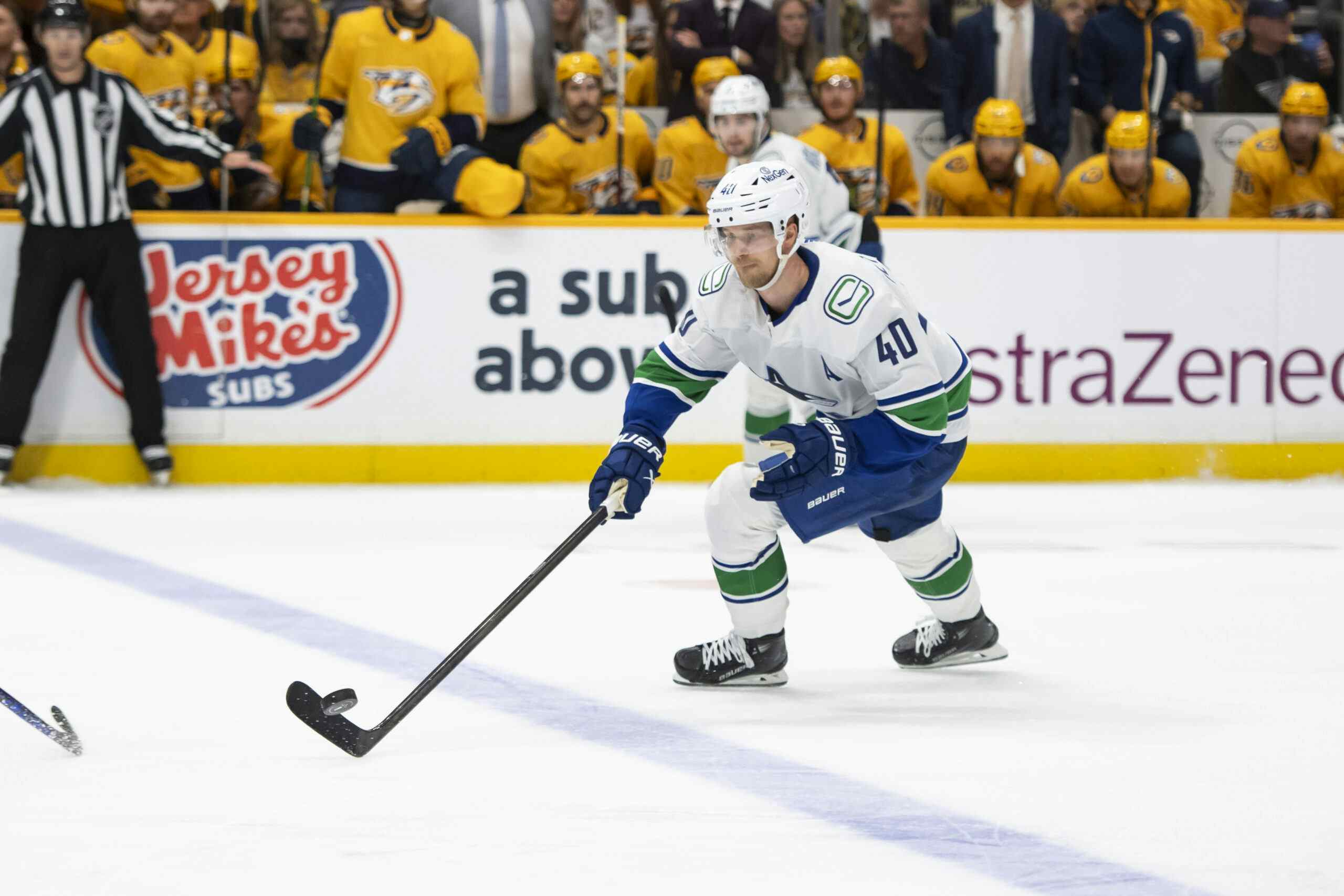Canucks Army Prospect Profile: #1 Brock Boeser
By Jeremy Davis
7 years ago
After a month of digging through the Canucks prospect pile, we find NCAA sniper Brock Boeser at the top of the heap. The 19-year old is heading into his sophomore season at the University of North Dakota, and will have a tough time topping his freshman year: a season in which he lead his team in goals and points, approached school records, and played a key role in UND’s national championship. Somehow though, it’s hard to doubt that he’ll find a way to improve on that.
Brock Boeser clocks in at #1: the top prospect in the 2016-17 Vancouver Canucks’ system.
We like Brock Boeser a whole lot here at Canucks Army, and I in particular am a big booster of the Minnesota sniper. Drafted 23rd overall at the 2015 NHL Entry Draft, Boeser was a bit of an unknown at the time – with so many CA-approved names still on the board, we kind of forgot about Boeser, who was still a very reasonable choice at 23 in any case. Now a year later, one could certainly argue that he could have gone in the top ten.
By the time Boeser got through his first interview at the draft, Canucks fans had a much clearer picture of what they had acquired. A tragic tale of overcoming loss interspersed with highlight packs of Boeser picking corners from 40 feet out painted a picture of a player mature beyond his years and admirable for both his internal and external characteristics. He drove that point home again after the NCAA championship when he took Baylee Bjorge, a North Dakota student with Down Syndrome, to her high school prom, prompting a discussion of whether he was destined to be captain of the Canucks someday (which is all well and good, but caman, Bo is the captain in waiting, we know this – Boeser gets an ‘A’ for sure).
By the time we’d looked deeper into Boeser’s numbers, we knew that we were dealing with a gifted goal scorer. TSN’s Craig Button stated at the draft that, in his opinion, Boeser had the best shot of any player in the last couple of drafts. And so we waited with bated to see how well his talents would translate to the tougher competition in the NCAA.
As it turned out, we didn’t have to wait long, as Boeser scored 17 and a half minutes into his first exhibition game with the University of North Dakota. Four games into the regular season, he potted a hat-trick, never going more than three games without scoring a goal for the whole season, celebrating four separate multi-goal nights. As time went on, Boeser’s production went from merely impressive to record setting. When I made him the Canucks Prospect First Star in January of this year, Boeser was in the midst of chasing UND freshman goal milestones held by Jonathan Toews (22), T.J. Oshie (24), and Zach Parise (26) – he surpassed all three by the end of the season. He was named the NCHC conference rookie of the week during January, and January’s co-rookie of the month.
By the time the season was winding down, Boeser had gone from a notable rookie to one of the NCAA’s most dangerous offensive threats. He finished the season fourth in goals among all college players, third in total points, second in points among freshmen, and first in goals and points on his team. Not only did he pile up the points, but he routinely looked phenomenal doing it.
Scoring at such a high rate at such a young age at the collegiate level, Boeser doesn’t have many statistical comparables. In fact, just four players were above the similarity threshold according to the latest version of pGPS*, although it’s hard to complain too much about the names that came out. Jonathan Toews and Thomas Vanek headline the group, while Colin Wilson is also on the list. Former Penguin Matt Murley rounds out the list as the only player among the group to play less than the 200-game threshold (He suited up for 62 NHL games), given Boeser a pGPS percentage of 75.0%.
His time at the World Junior tournament netted him a much lower 21.3 percent, as the three points he tallied in seven games are quite pedestrian. Next year he’s likely to get a better opportunity to show off as he’s going to be somewhat of a veteran presence on Team U.S.A.
*A recent development in the pGPS involved the re-scaling of a large portion of ages of players, particularly in professional leagues and those that had a greater variety of ages. The goal was to tighten up the age range among matches, which seems to have been accomplished in all relevant leagues. As such, you may notice drastic differences between these current numbers are ones that have been reported previously.
| SEASON | TEAM | LEAGUE | GP | G | A | P | pGPS % | pGPS p82 | pGPS R |
| 2014-15 | Waterloo | USHL | 57 | 35 | 23 | 58 | 25.0 | 55.0 | 16.77 |
| 2015-16 | North Dakota | NCAA | 42 | 27 | 33 | 60 | 75.0 | 70.0 | 64.04 |
| 2015-16 | U.S.A. U20 | WJC U20 | 7 | 1 | 2 | 3 | 21.3 | 44.6 | 11.58 |
Boeser’s trajectory will take him back to the Univeristy of North Dakota next season for a sophomore NCAA campaign in what will almost certainly be his final college year. It’s likely that he’s already developed enough to take a crack at the NHL roster, but there’s nothing to lose and plenty to gain by heading back to school for another year. There have been plenty of debates since his draft about when he’ll sign with the Canucks, but I’d wager that it’ll be somewhere within the confines of the 2016-17 NHL season. Depending on the levels of success of Vancouver, Utica and UND, it’s possible that he could sign a contract, or a PTO, and turn pro for a couple of games at the end of the season. Of course, he could be too busy leading North Dakota to another championship at that point, so we’ll have to wait and see.
Until then, we’ll be on the lookout for gifs and clips of Boeser tearing apart the NCAA – this time with BCHL prospect Tyson Jost as sit pivot. I had Boeser in the top spot of my personal list because of his innate ability to create offense all on his own, and while preventing goals is absolutely important, scoring goals is really the name of the game – plus, he makes it look so pretty.
Recent articles from Jeremy Davis





